Taking flight
by bookanistaNature writing has experienced a resurgence in recent times, not least as a means of exploring a wide range of personal issues and experiences. This is reflected in this year’s shortlist for The Wainwright Prize, an award for exceptional books about the great British outdoors, named in honour of the celebrated fell-walker, author and illustrator Alfred Wainwright (1907–1991).
Rob Cowen’s Common Ground is an evocative account of people and place through history in a small patch of wood, meadow, hedge and river at the edge of his new hometown of Harrogate. Amy Liptrot’s The Outrun is a frank and poetic examination of her battle with alcohol addiction and finding a road to recovery as she washes up in her native Orkney. Robert Macfarlane’s Landmarks is a joyous meditation on words and landscape, and the power of language to shape our sense of place. Michael McCarthy’s The Moth Snowstorm draws on a lifetime immersed in wildlife and natural landscapes to present an engaging treatise on how best to interact with the world around us. Katharine Norbury’s The Fish Ladder is a moving story of motherhood, marriage and self-discovery told through journeys on foot along the rivers of Britain. James Rebanks’ The Shepherd’s Life presents a unique account of rural life in an ancient landscape and a fundamental connection to the land that is alien to most modern lives.
We present an extract from each of the six shortlisted books.

“[A] cracking book and having finished I now feel deprived.” Alan Bennett
by Rob Cowen
I am dreaming of the edge-land again. It has begun to colonise my sleeping mind. Dreams take place in the midst of Scots pines and down among the cold, scrub-scattered banks. I am following a fox, a copper coat floating through the trees. He pauses. A backward glance. Incredible eyes – coronal black holes over exploding suns, that intense face; mouth curled at its edges in the white, greasepaint smile of The Joker. Another step. Am I to follow? He pads up to the lip of a rise and disappears. Suddenly I can’t move. I wake. The weak glow of a street light forms an exclamation mark on the ceiling. I dress quietly, shivering in the dark, pick up my notebook and walk out.
Modern life is such that it can be hard to see beyond the present. You think you know somewhere, but really you only know a layer, a moment. Most people don’t even notice such things, but just look around you. The moss-swollen pavement crack, the rosette of a dandelion defying a driveway or a gutter-growing sow thistle, these are glimpses of what lies beneath and beyond. The deep past and the far future.
A map drawn by Ely Hargrove in 1798 in his History of the Castle, Town and Forest of Knaresborough: with Harrogate, and Its Medicinal Waters shows the town I call home as little more than two rows of cottages. Harrogate, as the world now knows it, doesn’t yet exist. This hilly stack of roads, traffic lights and pristine flowerbeds, of imperialistic hotels, antique shops, churches and promenades, is still open land. Its cottage gardens, fields and marsh-meadows await delineation, diversion, draining and deed. The ‘medicinal’ wells that will soon lure legions of the aspiring middle classes to holiday here or, should they strike it lucky in the mills and mines, build vast villas on the woody escarpments to the south-west, are little more than mud-edged watering holes. Pigeons pick at salt accretions forming at their rims; only the informed aristocracy and gentry shoo them away to take the waters. The arches, domes and sweeping curves of Regency and Victorian architecture that will soon form the grand structures of ‘the English Spa’ lie dormant, locked in the gritstone cliffs and subterranean clay of the surrounding countryside.
Hindsight imbues the map with the feeling of land on the cusp. It has the death-stare of ground destined to be choked with high-density housing, tower blocks, supermarkets, shopping centres, warehouses and car dealerships. In a matter of decades the two little rows of cottages will bloom into an urban mass that consumes the surrounding land and villages. Eventually it will reach an ancient settlement a mile and a half to the north marked on Hargrove’s map with a green blob – a legacy of its past life as part of a royal hunting forest. Between the 1950s and 1990s, the sprawl will swallow Bilton almost entirely, appropriating its Celtic name – farmstead of ‘Bilain’ – for the suburb thrown up around the scattering of old homesteads and farms. But it will be a last meal. For now at least, Harrogate will reach no further in this direction. Bilton will become edge-land. There will be no protests, no public outcries or petitions, no organised lines of conservationists standing in front of diggers or activists hauled down from centuries-old oak trees. The ground won’t resist sublimation. After all, it has always been a place of transience and transformation. It has known innumerable beginnings and endings.
Windmill Books, paperback, £8.99

“The sheer sensuality of Liptrot’s prose and her steely resolve immediately put her right up there with the best.” New Statesman
from The Outrun
by Amy Liptrot
When I arrived at Rose Cottage, I made sure broadband was working before the hot water. I’m medieval with Wi-Fi: concentrating on the fundamentals of making fire and baking bread while becoming increasingly reliant on my smartphone.
Wherever I am, I spend most of my time with a laptop online, so I might as well do it in the calm and beautiful surroundings of Papay. In the past decade or so, the internet has made island life possible for more people, able to work remotely for employers down south. This way of working increases hope that the fragile populations of some of the smaller islands will not only stabilise but grow. The internet can be more important to remote communities than it is in cities. Since I’ve been sober and in Orkney, I’m online more than ever as a way of keeping myself linked to the old life I’m not prepared to cut ties with. I’m keeping in spectral communication with the ghosts of my past.
There can be connection problems. Our internet on Papay comes through the copper phone lines as the population size does not justify the phone companies installing fibre-optic cables. The signal is sent by microwaves from Kirkwall to Shapinsay to Sanday to Westray then to us, declining in speed with each transition. The mobile signal can be affected by the wind, and one side of the island gets the Orange signal, the other O2. I’m waiting for the next gale to receive my text messages.
In the islands in the age of digital media, we often find that, although it seems contradictory, technology can bring us closer to the wild. When an unusual bird, such as a sea eagle, is seen in the sky above Orkney, or a pod of orca along the coastline, people pass messages immediately via a local birding forum or text-message groups so that others can rush out to see them. Alerts on the possibilities of seeing the Merry Dancers circulate on the social networks and, the next day or the same night, people share their photographs.
On Sanday, a webcam is trained on the colony of grey seals that pup in November. I post a link on Facebook and my friends in offices in London watch the hulking grey females hauled up on the beach with their white teddy-bear-like pups, unable to swim yet. We chat while watching seals caught before dawn by night-vision camera and a black-backed gull eating a seal’s afterbirth.
I think of Maggie and her lifelong connection to a place; her memories of names and houses on the island were similar to the way I can place people I know to different corners and times of the internet. Many of them I’ve never met in person but we’ve vaguely followed each other’s lives for years. Often I feel as if my real life is inside the computer while my time back in Orkney and the people I see here are just a temporary intrusion. I know people on Twitter I’ve never met better than people I’ve sat opposite for months at work or people I went to school with. I’ve moved around a lot but the internet is my home. Read on…

“Impassioned, polemical and personal… a joy.” Independent
from The Moth Snowstorm
by Michael McCarthy
In the summer of 1954, when Winston Churchill was dwindling into his dotage as British prime minister, the beaten French were withdrawing from Indochina, and Elvis Presley was beginning to sing, my mother’s mind fell apart. I was seven and my brother John was eight. Norah our mother was forty years old and was a teacher, although she had given up teaching when we were born. She came from a poor family but had won scholarships and been well educated, and was well read with a literary bent; she had corresponded with Pádraic Colum, he who wrote ‘She Moved Through the Fair’, after the Irish poet had struck up a friendship with her father, a merchant marine steward, on a transatlantic voyage; she had a novel sketched out (it was about a paediatrician who was wonderful with children and terrible with everybody else). She was gentle and kind to a fault, entirely unselfish and wholly honest, and a deeply religious Catholic. Her mind had begun to fray during the long absences of my father Jack, who was a radio officer on the Queen Mary. These were the final glory days of the Cunard ocean liners, and it might be said that his life sailing regularly between Southampton and New York was glamorous; certainly it was more so than the life he found when he came home to our small terraced house in Birkenhead, the town across the River Mersey from Liverpool, for two weeks every three months. He was not loving, either as a husband or a father – he did not know how to love – although he was not a bad man; but he covered up his lifelong insecurity with bluster, which too often turned into bad temper.
The ten-year marriage, doctors clinically recorded later, had been ‘moderately happy’. In her long isolations, bringing us up, my mother was closely supported by her well-meaning but bossy sister Mary and Mary’s biddable husband Gordon, who were childless, but in 1953 Mary and Gordon spent several months in America with friends – they contemplated emigrating – and it was during this time, when she was even more cut off, that my mother’s psyche began to wander. When Mary and Gordon returned they saw a change in her, and as 1953 became 1954 Norah began to behave strangely; she went missing for a day and was found twenty miles away, having walked alone for many hours. She grew increasingly troubled as the year went on and the climax came in the summer when she threw herself upon the mercy of Mother Church, which sixty years ago straitly governed the lives of the Irish Catholic families of Merseyside, and Canon Quinn, iron-fisted ruler of the parish of Our Lady, decreed she should be sent to an asylum.
No one could stand against this because no one understood what was wrong with her, other than that her mind was obviously in turmoil and that she was greatly distressed. As were the rest of the family: Jack and Mary and Gordon and other close relatives were not only at a loss but also ashamed, since this was well before R.D. Laing turned mental illness into martyrdom, and the best my father could do was borrow the money for her to go as a private patient, and off to the mental hospital she went, from whence, as was pointed out to me much later, you did not, in those days, often emerge.
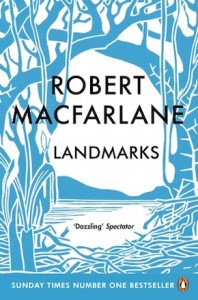
“Enormously pleasurable, deeply moving.” Financial Times
from Landmarks
by Robert Macfarlane
This is a book about the power of language – strong style, single words – to shape our sense of place. It is a field guide to literature I love, and it is a word-hoard of the astonishing lexis for landscape that exists in the comprision of islands, rivers, strands, fells, lochs, cities, towns, corries, hedgerows, fields and edgelands uneasily known as Britain and Ireland. Its ten main chapters explore writing so fierce in its focus that it can change the vision of its readers for good, in both senses. Its nine glossaries gather thousands of the words – a fraction of the uncountable whole – that exist within scores of languages and dialects for specific aspects of landscape, nature and weather. The writers collected here come from Essex to the Cairngorms, Connemara to Cumbria and Suffolk to Surbiton. The words collected here come from the Shetlands to the Scillies, from Pembrokeshire to Norfolk, from Norn and Anglo-Saxon, Romani, Welsh, Irish, Gaelic, Orcadian, Shetlandic, Doric, and dozens of English dialects, through to the last vestiges of living Norman still spoken by a few people on the Channel Islands.
Landmarks has been years in the making. For as long as I can remember I have been drawn to the work of writers who use words exactly and exactingly when describing landscape and natural life. “The hardest thing of all to see is what is really there,” wrote J.A. Baker in The Peregrine (1967), a book that brilliantly shows how such seeing might occur in language, written as it is in prose that has “the quivering intensity of an arrow thudding into a tree”. And for over a decade I have been collecting place-words as I have found them: gleaned singly from conversations, correspondences or books, jotted down in the pages of journals or on slips of paper. Now and then I have hit buried treasure in the form of dialect dictionaries or extraordinary people – troves that have held gleaming handfuls of coinages. The word-lists of Landmarks have their origin in one such trove, turned up on the moors of the Outer Hebridean island of Lewis in 2007. There, as you will read in the next chapter, I was shown a ‘Peat Glossary’: a draft list of the hundreds of Gaelic terms for features of the moorland that stretches over much of Lewis’s interior. The glossary had been co-compiled by Hebridean friends of mine through archival research and oral history. Some of the language it recorded was still spoken – but much had fallen into disuse. The remarkable referential exactitude of that glossary, and the poetry of so many of its terms, set my head a-whirr with words.
Although I knew Gaelic to be richly responsive to the sites in which it was spoken, it was my guess that other tongues and dialects in these islands also possessed wealths of words for features of place – words that together constituted a vast vanished or vanishing language for landscape. It seemed to me then that although we have our compendia of flora, fauna, birds, reptiles and insects, we lack a Terrae Britannica, as it were: a gathering of terms for the land and its specificities – terms used by fishermen, farmers, sailors, scientists, crofters, mountaineers, soldiers, shepherds, walkers and unrecorded ordinary others for whom specialised ways of indicating aspects of place have been vital to everyday life and perception. It seemed, too, that it might be worthwhile to collect some of this fine-grained and fabulously diverse vocabulary of place, and release its poetry back into imaginative circulation.
Penguin Books, paperback, £9.99

“Truly compelling… warm and touching.” Jo Brand
from The Fish Ladder
by Katharine Norbury
I walked over to the river mouth. Its shore was flat and fecund, green marsh, brown mud. There was a popping sound, as though a hundred mouths sucked bull’s-eyes. Marsh gas, I supposed. And the Humber. As wide and real as death. A few miles upstream a single-span suspension bridge joined Lincolnshire with the East Riding of Yorkshire; it was a popular place for suicides. I wondered if any of them floated out this far, had washed up on this shore. I was afraid to look at the water, afraid of what I might see. A bloated dog, pale limbs like chair legs pointing at a sightless sky. Or worse.
My unease was accentuated by a sound, and one so distinctive that I would have known the place if I were brought back blindfold. It was a deep vibration, a plainsong, a confluence of many voices. At first I thought it was an accident formed by the architecture of the air, by the river-wind running against the sea-wind. And that may have been so, but in the paleness of the night I could see the instrument in which the notes were caught: the electricity poles that ran out to the lighthouse, and the cables strung between them. Any electrical current that passed through the wires was silent, or at any rate its gentle hum suppressed below the song, which was ceaseless, low, continuous as madness.
I turned away, and walked over to the other side of the spit, to the beach.
The more space I put between myself and the wakeful inhabitants of the mainland, the better I felt. The sea shone pearl-grey, opaque, and the sky lightened above it with a bloom as soft as a plum. Sunrise seemed imminent but I knew it wasn’t for another hour. A rusted raffia-and-metal chair retrieved from the sea and set up on the sand attested to the presence of fishermen, or birdwatchers, but not now. I liked being alone. I settled into my gait, happy that mine were the first footprints in sand as new as snow.
Over the years there had been attempts to stop the spit from breaking, to protect it from the combination of long-shore drift and the river’s passage that formed it, destroyed it, and will form it again. These various schemes now presented themselves as so many abandoned works. Ballast, in concrete blocks. The ribs of groins, each one made from a single tree, the bars of a giant cage along the shore. The horizontal planks had long since washed away, or been removed, as the futility of what they were attempting became apparent. The remaining upright posts had the gravitas of gods, each one as thick as a man, and twice as tall. I thought of Easter Island, the unseeing heads that guarded the land. Or the skeleton of a Viking ship, its king and cargo turned to ash. I was delighted by the place, forgot about my fear, and was still running about between the forest of posts when the sun lifted out of the sea, orange into an indigo sky. I was surprised by the warmth as it lit my face. As though a stranger had reached out and touched me, in greeting, or reprimand. And shadows! Long, spidery shadows. Suddenly, to the right of me, I saw my own. Tall, and spectre-thin, my long hair blown sideways, my arms incidental above endless scissor legs. And suddenly my face was wet, tears from nowhere, my shadow. My shadow! I stood between it and the sun, it flooded from my feet along the earth and, for a little while, I knew I was alive. This moment, these moments, of recognition, they come so rarely; without hindsight, without forethought. Time passing even as we enter it.

“Affectionate, evocative, illuminating… I love this book.” Nigel Slater
from The Shepherd’s Life
by James Rebanks
HEFT
Noun: 1) (Northern England ) A piece of upland pasture to which a farm animal has become hefted.
2) An animal that has become hefted thus.
Verb: Trans. (Northern England and Scotland ) of a farm animal, especially a flock of sheep: To become accustomed and attached to an area of upland pasture.
Adj.: Hefted: describing livestock that has become thus attached
(Etymology: from the Old Norse hefð, meaning ‘tradition’)
I realized we were different, really different, on a rainy morning in 1987. I was sitting in an assembly in the 1960s-style shoddily built concrete comprehensive in our local town. I was thirteen or so years old, sitting surrounded by a mass of other academic non-achievers, listening to an old battle-weary teacher lecturing us on how we should aim to be more than just farm workers, joiners, brickies, electricians and hairdressers. It felt like a sermon she’d delivered many times before. It was a waste of time and she knew it. We were firmly set, like our fathers and grandfathers, mothers and grandmothers before us, on being what we were, and had always been. Plenty of us were bright enough, but we had no intention of displaying it at school. It would have been dangerous.
There was an abyss of understanding between that teacher and us. The kids who gave a damn had departed the year before to our local grammar school, leaving the ‘losers’ to fester away over the next three years in a place no one wanted to be. The result was something akin to a guerrilla war between largely disillusioned teachers and some of the most bored and aggressive kids imaginable. We played a ‘game’ as a class where the object was to smash the greatest value of school equipment in one lesson and pass it off as an ‘accident’.
I was good at that kind of thing. The floor was littered with broken microscopes, biological specimens, crippled stools and torn books. A long dead frog pickled in formaldehyde lay sprawled on the floor doing breaststroke. The gas taps were burning like an oil rig and a window was cracked. The teacher stared at us with tears streaming down her face – destroyed – as a lab technician tried to restore order.
One maths lesson was improved for me by a fist-fight between a pupil and the teacher, before the lad ran for it down the stairs and across the muddy playing fields, only to be knocked down by the teacher before he escaped into town. We cheered as if it were a great tackle in a game of rugby. From time to time, someone would try (incompetently) to burn the school down. One boy who we bullied killed himself a few years later in his car. It was like being locked in a Ken Loach movie: if some skinny kid had turned up with a kestrel, no one would have been surprised.
Penguin Books, paperback, £8.99
 Rob Cowen is an award-winning journalist and writer who has authored regular columns on nature and travel for the Independent, Independent on Sunday and The Telegraph. Described by the Guardian as “one of the UK’s most exciting nature writers”, he received the Roger Deakin Award from the Society of Authors for his first book Skimming Stones and Other Ways of Being in the Wild (2012). Common Ground was also shortlisted for the 2015 Portico Prize for Non-Fiction.
Rob Cowen is an award-winning journalist and writer who has authored regular columns on nature and travel for the Independent, Independent on Sunday and The Telegraph. Described by the Guardian as “one of the UK’s most exciting nature writers”, he received the Roger Deakin Award from the Society of Authors for his first book Skimming Stones and Other Ways of Being in the Wild (2012). Common Ground was also shortlisted for the 2015 Portico Prize for Non-Fiction.
windmill-books.co.uk
@robbiecowen
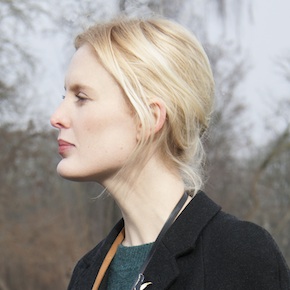 Amy Liptrot has published her work with various magazines, journals and blogs and has written a regular column for Caught by the River, out of which The Outrun emerged. As well as writing for her local newspaper Orkney Today, and editing the University of Edinburgh’s student newspaper, Amy has worked as an artist’s model, a trampolinist and in a shellfish factory. The Outrun, her first book, was also shortlisted for the 2016 Wellcome Book Prize.
Amy Liptrot has published her work with various magazines, journals and blogs and has written a regular column for Caught by the River, out of which The Outrun emerged. As well as writing for her local newspaper Orkney Today, and editing the University of Edinburgh’s student newspaper, Amy has worked as an artist’s model, a trampolinist and in a shellfish factory. The Outrun, her first book, was also shortlisted for the 2016 Wellcome Book Prize.
canongate.tv
@amy_may
Author portrait © Lisa Swarna Khanna
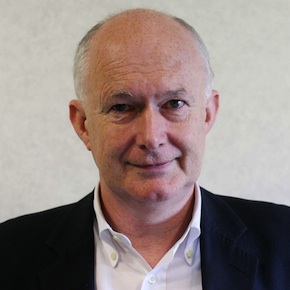 Michael McCarthy is one of Britain’s leading writers on the environment. Formerly environment correspondent of The Times and environment editor of the Independent, he has three times been named as Environment Reporter of The Year. In 2007 he was awarded the Medal of the RSPB, for outstanding services to conservation; the only occasion in the 100-year history of the RSPB Medal that it has been awarded to a journalist. He is also suthor of Say Goodbye to the Cuckoo (John Murray, 2009).
Michael McCarthy is one of Britain’s leading writers on the environment. Formerly environment correspondent of The Times and environment editor of the Independent, he has three times been named as Environment Reporter of The Year. In 2007 he was awarded the Medal of the RSPB, for outstanding services to conservation; the only occasion in the 100-year history of the RSPB Medal that it has been awarded to a journalist. He is also suthor of Say Goodbye to the Cuckoo (John Murray, 2009).
hodder.co.uk
@mjpmccarthy
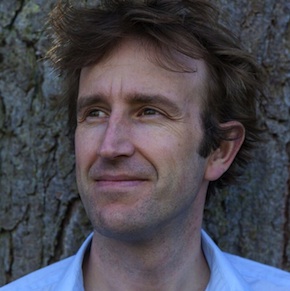 Robert Macfarlane was born in Nottinghamshire in 1976. He is the author of Mountains of the Mind, The Wild Places, The Old Ways and Landmarks. Mountains of the Mind won the Guardian First Book Award and the Somerset Maugham Award and The Wild Places won the Boardman-Tasker Award. Both books have been adapted for television by the BBC. He is a Fellow of Emmanuel College, Cambridge, and writes on environmentalism, literature and travel for publications including the Guardian, The Sunday Times and The New York Times. He is currently working on an illustrated children’s book about the natural world in collaboration with illustrator Jackie Morris. Landmarks was also shortlisted for the 2015 Samuel Johnson Prize.
Robert Macfarlane was born in Nottinghamshire in 1976. He is the author of Mountains of the Mind, The Wild Places, The Old Ways and Landmarks. Mountains of the Mind won the Guardian First Book Award and the Somerset Maugham Award and The Wild Places won the Boardman-Tasker Award. Both books have been adapted for television by the BBC. He is a Fellow of Emmanuel College, Cambridge, and writes on environmentalism, literature and travel for publications including the Guardian, The Sunday Times and The New York Times. He is currently working on an illustrated children’s book about the natural world in collaboration with illustrator Jackie Morris. Landmarks was also shortlisted for the 2015 Samuel Johnson Prize.
penguin.co.uk
Author portrait © Rosamund Macfarlane
 Katharine Norbury trained as a film editor with the BBC and has worked extensively in film and television drama. She is a graduate of the Creative Writing MA programme at UEA. The Fish Ladder was longlisted for the 2015 Guardian First Book Award and was a book of the year in the Guardian, the Independent and The Telegraph. She lives in London with her family.
Katharine Norbury trained as a film editor with the BBC and has worked extensively in film and television drama. She is a graduate of the Creative Writing MA programme at UEA. The Fish Ladder was longlisted for the 2015 Guardian First Book Award and was a book of the year in the Guardian, the Independent and The Telegraph. She lives in London with her family.
bloomsbury.com
@kjnorbury
Author portrait © Robin Farquhar-Thomson
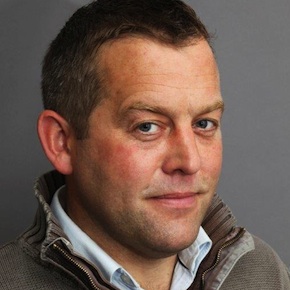 James Rebanks is known as the Herdwick Shepherd, whose account of shepherding has a strong following on Twitter. The Sheperd’s Life, his first book, won the Lakeland Book of the Year 2015. He has since authored The Illustrated Herdwick Shepherd. His family have farmed in the same area for six hundred years.
James Rebanks is known as the Herdwick Shepherd, whose account of shepherding has a strong following on Twitter. The Sheperd’s Life, his first book, won the Lakeland Book of the Year 2015. He has since authored The Illustrated Herdwick Shepherd. His family have farmed in the same area for six hundred years.
penguin.co.uk
@herdyshepherd1
Author portrait © Eamonn McCabe
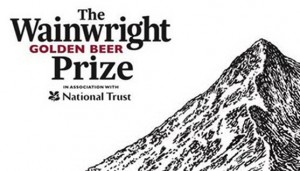 The Wainwright Prize, now in it’s third year, awards £5,000 annually to the book that best reflects Alfred Wainwright’s dedication to and wonder at Britain’s open spaces. The prize is judged by a panel comprising chair Dame Fiona Reynolds; TV presenter Julia Bradbury; Sally Palmer, publisher of National Trust Magazine; Bill Lyons, executive producer of Coast and Countryfile; Dan Lewis, Marketing Manager of Stanfords; and Fergus Collins, editor of Countryfile Magazine. Assisting in the judging process are Eric Robson and Jane King from The Wainwright Society. It is sponsored by Wainwright Golden Beer, and supported by partners Stanfords and The National Trust. The previous winners are The Green Road into Trees: A Walk Through England by Hugh Thomson (2014) and Meadowland by John Lewis-Stempel (2015).
The Wainwright Prize, now in it’s third year, awards £5,000 annually to the book that best reflects Alfred Wainwright’s dedication to and wonder at Britain’s open spaces. The prize is judged by a panel comprising chair Dame Fiona Reynolds; TV presenter Julia Bradbury; Sally Palmer, publisher of National Trust Magazine; Bill Lyons, executive producer of Coast and Countryfile; Dan Lewis, Marketing Manager of Stanfords; and Fergus Collins, editor of Countryfile Magazine. Assisting in the judging process are Eric Robson and Jane King from The Wainwright Society. It is sponsored by Wainwright Golden Beer, and supported by partners Stanfords and The National Trust. The previous winners are The Green Road into Trees: A Walk Through England by Hugh Thomson (2014) and Meadowland by John Lewis-Stempel (2015).
The 2016 winner will be announced on Friday 5 August in a special event at Countryfile Live at Blenheim Palace in front of an audience of over 300, with highlights subsequently shown on BBC One’s Countryfile.
wainwrightprize.com
@wainwrightprize

